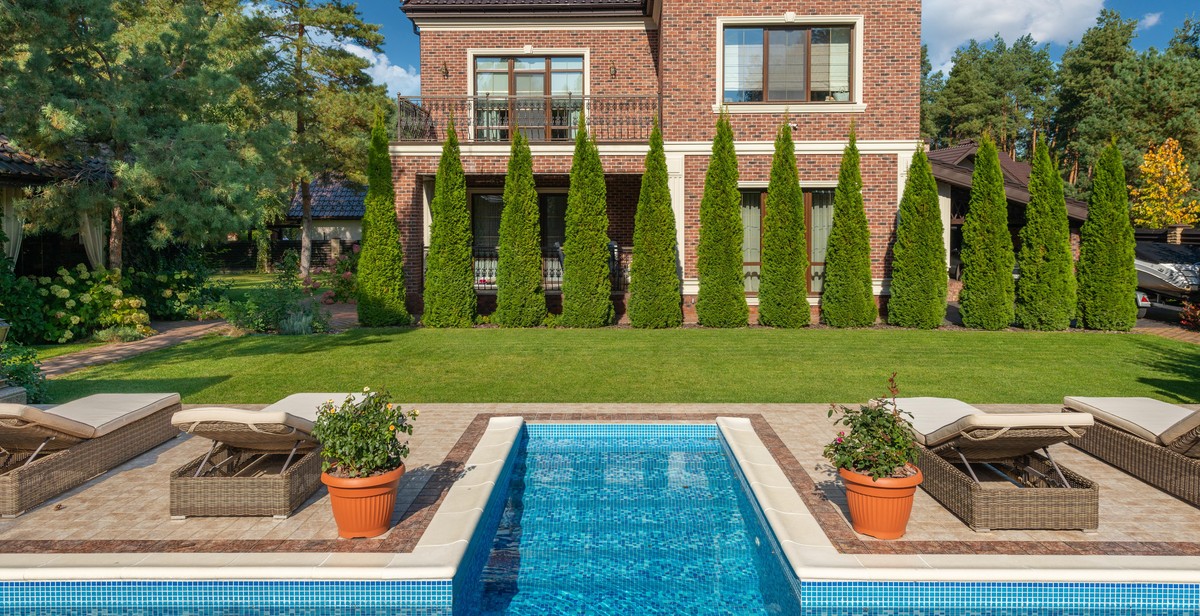How to Create a Backyard Obstacle Course for Fun and Fitness
Getting outdoors and being active is essential for our physical and mental well-being. One way to achieve this is by creating a backyard obstacle course that the whole family can enjoy. Not only is it a fun way to spend time together, but it also promotes fitness and healthy competition.
Benefits of a Backyard Obstacle Course
Obstacle courses are a great way to improve your overall fitness level. They challenge your strength, endurance, agility, and coordination. Plus, they provide a full-body workout that is more engaging and enjoyable than traditional exercise routines.
Creating an obstacle course in your backyard also promotes creativity and problem-solving skills. It encourages you to think outside the box and come up with new and exciting challenges that will keep you and your family entertained for hours.
How to Create Your Own Obstacle Course
Creating a backyard obstacle course is easier than you think. All you need is a little bit of space and some creativity. Start by identifying the obstacles you want to include, such as tires, cones, ropes, and balance beams. Then, map out a course that incorporates these obstacles in a fun and challenging way.
Don’t be afraid to get creative and add your own personal touch to the course. You can even turn it into a competition by timing each other and keeping score. The possibilities are endless!

Benefits of a Backyard Obstacle Course
Creating a backyard obstacle course is an excellent way to add some fun and excitement to your fitness routine. Not only is it a great way to get outside and enjoy the fresh air, but it also offers numerous physical and mental benefits that can improve your overall health and well-being. Here are just a few of the many benefits of a backyard obstacle course:
Improves Physical Fitness
One of the most obvious benefits of a backyard obstacle course is that it can help improve your physical fitness. Obstacle courses are designed to challenge your body in a variety of ways, from improving your strength and endurance to enhancing your agility and balance. By incorporating a variety of obstacles into your course, you can create a full-body workout that targets all of your major muscle groups.
Enhances Cognitive Development
Another significant benefit of a backyard obstacle course is that it can enhance cognitive development. Obstacle courses require you to think critically and make split-second decisions, which can help improve your cognitive function and decision-making abilities. Additionally, obstacle courses can help improve your spatial awareness and hand-eye coordination, which can translate to improved performance in other areas of your life, such as sports or other physical activities.
Builds Confidence and Self-Esteem
Finally, a backyard obstacle course can help build confidence and self-esteem. Overcoming obstacles and completing challenges can be incredibly empowering and can help you feel more confident in your abilities. Additionally, the sense of accomplishment that comes with completing a challenging obstacle course can boost your self-esteem and improve your overall mood and well-being.
Overall, a backyard obstacle course can be an excellent way to improve your physical and mental health. Whether you’re looking to improve your fitness, enhance your cognitive function, or boost your confidence, a backyard obstacle course can help you achieve your goals.

Designing Your Backyard Obstacle Course
Designing your own backyard obstacle course can be a fun and challenging project that promotes fitness and creativity. Here are some tips to help you create a fun and challenging obstacle course:
1. Assess Your Space
The first step in designing your backyard obstacle course is to assess the available space. Measure the area and determine how much space you can allocate for your obstacle course. Consider the terrain and any existing features like trees, rocks, and slopes that you can incorporate into your course.
2. Determine Your Budget
Once you have assessed your space, determine your budget. Decide how much you are willing to spend on materials and equipment. You can save money by using recycled materials or repurposing items you already have at home.
3. Choose Your Obstacles
The next step is to choose your obstacles. Your obstacles should be challenging but safe. Consider your fitness level and that of your family and friends who will be using the course. Some popular obstacles include:
- Tire run
- Climbing wall
- Balance beam
- Cargo net
- Monkey bars
You can also get creative and add your own unique obstacles. Consider adding water features or incorporating natural elements like logs and boulders.
When choosing your obstacles, make sure to consider the space available and the budget you have set. You can always add more obstacles later on as your budget and space allow.
Designing your backyard obstacle course can be a fun and rewarding experience. By assessing your space, determining your budget, and choosing your obstacles, you can create a challenging and exciting course that promotes fitness and creativity.

Building Your Backyard Obstacle Course
After gathering all the necessary materials and tools, preparing the ground, and deciding on the obstacles you want to include in your backyard obstacle course, it’s time to start building.
Step 1: Build the Base
The first step is to build the base of your obstacles. This can be done using PVC pipes, wooden planks, or any other suitable material. Make sure the base is sturdy enough to support the weight of the obstacle and the person using it.
Step 2: Add the Obstacle Features
Once the base is in place, it’s time to add the obstacle features. This can include climbing walls, balance beams, monkey bars, and more. Make sure to secure the features to the base using screws or other appropriate fasteners.
Step 3: Add the Finishing Touches
After building the obstacles, it’s time to add the finishing touches. This can include painting the obstacles, adding padding or foam for safety, and creating signage to help guide users through the course.
Step 4: Test the Obstacles
Before using the obstacle course, it’s important to test each obstacle to ensure it’s safe and functional. Make any necessary adjustments or repairs before allowing anyone to use the course.
Step 5: Enjoy Your Backyard Obstacle Course!
Once the obstacles are built and tested, it’s time to enjoy your backyard obstacle course! Invite friends and family over to test their skills and have fun while getting fit.
| Materials | Tools |
|---|---|
| PVC pipes | Saw |
| Wooden planks | Drill |
| Fasteners (screws, bolts, etc.) | Hammer |
| Padding or foam | Measuring tape |
| Paint | Level |

Using Your Backyard Obstacle Course
Now that you have created your backyard obstacle course, it’s time to put it to use. Here are some tips to help you get the most out of your obstacle course:
Warm-Up and Stretching
Before using your obstacle course, it’s important to properly warm up and stretch to prevent injury. Start with some light cardio exercises like jogging or jumping jacks to get your heart rate up. Then, focus on stretching your muscles, paying special attention to the areas that will be used the most during the course, such as your legs, core, and arms.
Safety First
It’s important to prioritize safety when using your backyard obstacle course. Make sure to inspect the course before each use to ensure that all equipment is in good condition and secure. If any equipment is damaged or unstable, do not use it until it has been repaired or replaced.
Always wear appropriate footwear, such as sneakers with good grip, and consider wearing gloves to protect your hands. If you have children using the course, make sure to supervise them at all times and provide them with appropriate safety gear, such as helmets.
Customize Your Course
Your backyard obstacle course is customizable, so feel free to mix it up and add new challenges to keep things interesting. You can also adjust the difficulty level of the course to suit your fitness level and goals.
Consider adding new obstacles, such as a balance beam or a rope climb, or changing the order of the obstacles to create a new challenge. You can also time yourself to track your progress and challenge yourself to beat your previous record.
With these tips, you can make the most out of your backyard obstacle course and enjoy a fun and challenging workout right in your own backyard.

Conclusion
Creating a backyard obstacle course can be a fun and exciting way to stay active and improve your fitness. By using materials you have at home, you can design a course that is challenging and engaging for all ages. Whether you’re looking to improve your strength, endurance, or agility, an obstacle course can provide a full-body workout.
Tips for Building an Effective Obstacle Course
- Choose a variety of obstacles that challenge different muscle groups and skills.
- Ensure that your obstacles are safe and sturdy.
- Set up the course in a way that allows for maximum movement and flow.
- Encourage friendly competition and keep track of your progress to stay motivated.
Benefits of a Backyard Obstacle Course
Not only is creating a backyard obstacle course a fun way to stay active, but it also has numerous health benefits. Regular exercise can help improve your cardiovascular health, strengthen your muscles, and boost your mood. Additionally, obstacle courses can help improve your balance, coordination, and reaction time, making you more agile and less prone to injury.
Final Thoughts
Creating a backyard obstacle course is a great way to stay active and have fun with your family and friends. By building a challenging and engaging course, you can improve your fitness and overall health. So, get creative and start building your own obstacle course today!
